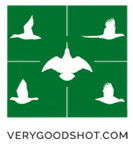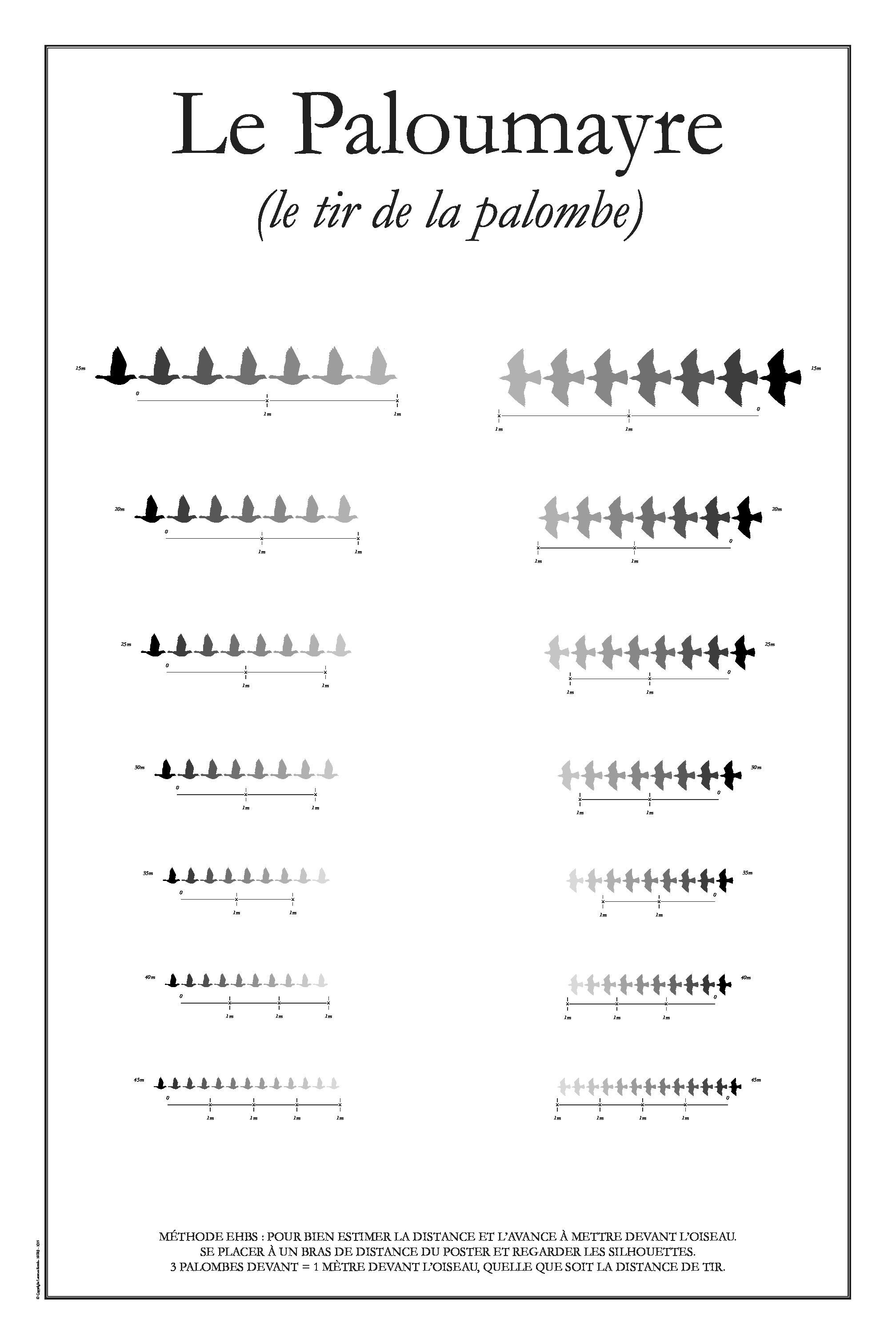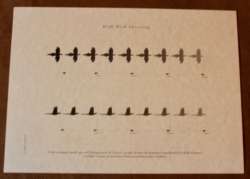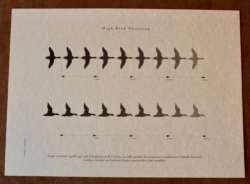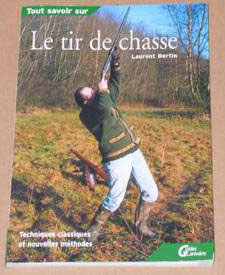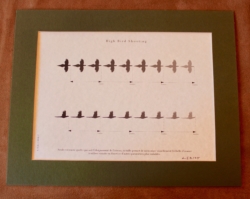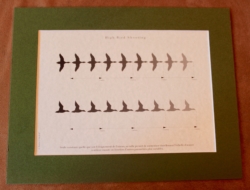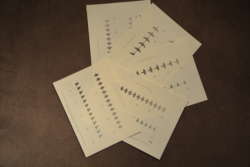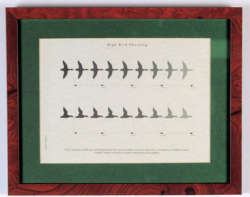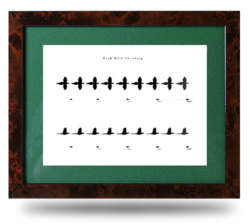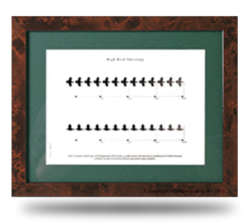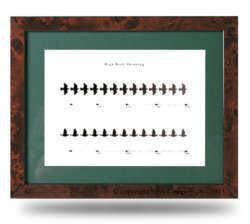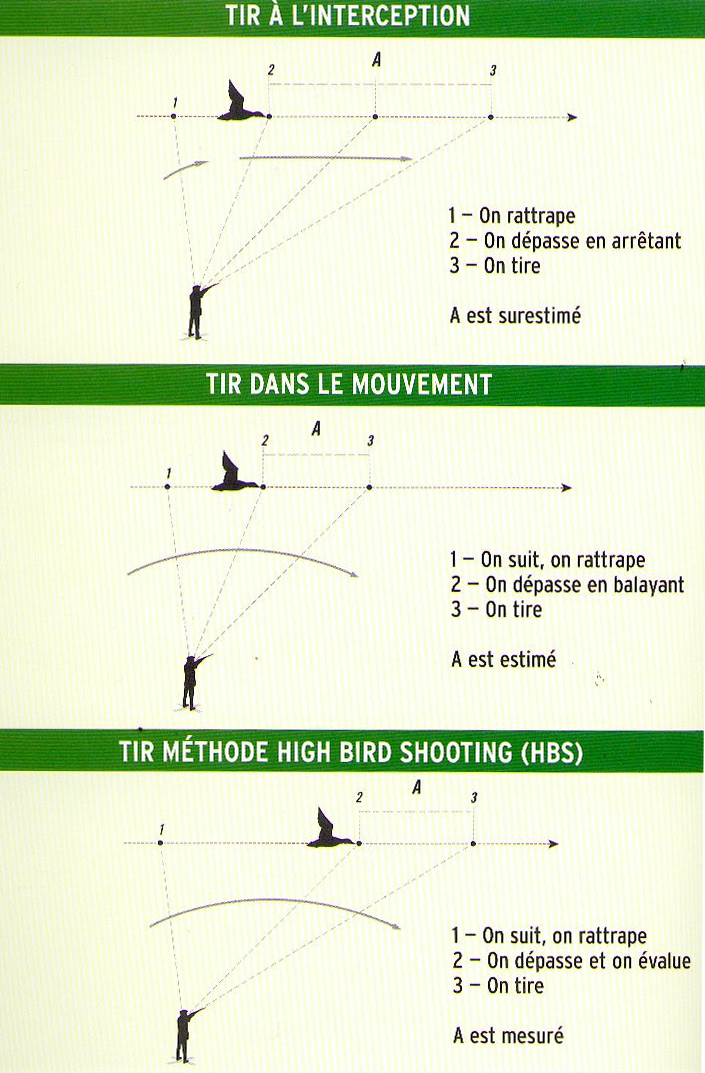 La Méthode HBS est basée sur l’entraînement de la mémoire visuelle du tireur.
La Méthode HBS est basée sur l’entraînement de la mémoire visuelle du tireur.
Elle a été imaginée sur la base du constat simple que le seul élément d’échelle dont le tireur dispose est l’oiseau lui-même.
Un canard, un faisan font approximativement 50 cm de longueur, en moyenne.
Donc deux fois cette longueur vue = 1 mètre.
Une perdrix, un pigeon font environ 30 cm. Donc 3 fois la longueur considérée = 1 mètre devant l’oiseau,
Si l’on considère la silhouette que l’on va viser, on peut reporter sur la ligne de vol de l’oiseau deux ou trois fois la taille de la silhouette que l’on voit pour savoir la valeur du mètre devant, et ce quelle que soit la distance à laquelle se situe la cible.
Le mètre d’avance vous est donné à l’échelle réelle.
Ensuite vous reportez devant pour les mètres suivants ! A vous de voir combien vous lui mettrez. Cette projection de l’esprit vient très vite, c’est mécanique ! En quelques fractions de seconde.
Une fois le tableau accroché à votre mur, chez vous ou dans votre bureau, vous l’avez à l’œil tous les jours. Et sans vraiment vous en rendre compte le process va intégrer votre mémoire visuelle et « l’imprimer » dans votre cerveau.
Vous pouvez aussi répéter la mécanique lorsque vous êtes dehors sur n’importe quel oiseau, pigeon ou autre corbeau.
Une bonne estimation de l’avance est la clé du succès pour obtenir une bonne précision de tir.
Ne vous occupez pas de la distance puisqu’elle vous est donnée automatiquement par la taille de l’oiseau. C’est l’élément d’échelle qui reste invariable, et qui vous permet d’évaluer la vraie avance en fonction de la vitesse de l’oiseau.
Cette méthode très efficace, de l’avis de tous ceux qui l’’ont adoptée fonctionne en fait comme une disquette de conduite de tir que l’on glisserait dans le télémètre de votre cerveau.
Elle provoque un réflexe de calcul exactement comme le ferait un calculateur de tir.
The HBS Method for High Bird Shooting
The HBS Method is based on the shooter’s visual memory training.
It was imagined on the basis of the simple observation that the only ladder element available to the shooter is the bird itself. So twice this length seen = 1 meter.
A partridge, a pigeon are about 30 cm. So 3 times the length considered = 1 meter in front of the bird,
If you look at the silhouette you’re going to be aiming for, you can put two or three times the size of the silhouette you see on the line of flight of the bird to know the value of the meter in front, and this regardless of the distance at which the target is located. The meter advance is given to you on the actual scale.
Then you move forward for the next meters! It’s up to you to see how much you put in.
This projection of the mind comes very quickly, it’s mechanical! In a few fractions of a second.
Once the painting hangs on your wall, at home or in your office, you keep an eye on it every day.
And without really realizing it, the process will integrate your visual memory and print it into your brain. You can also repeat the mechanics when you are out on any bird, pigeon or other crow. A good estimate of the advance is the key to success in obtaining good shooting accuracy.
Don’t worry about the distance since it is given to you automatically by the size of the bird. It is the element of scale that remains invariable, and that allows you to evaluate the true advance according to the speed of the bird.
This very effective method, in the opinion of all those who have adopted it actually works as a shooting drive floppy that would slip into the range meter of your brain.
It causes a computational reflex just like a firing calculator would.
